The Inner South Canberra Community Council
Priority policies and actions for the incoming ACT government ACT elections 2020
A. Streetscapes, Urban Forest and Open Spaces
The ISCCC’s online survey of 555 residents clearly demonstrated the high value they place on their
streetscapes, urban forest and open spaces. Therefore, the ISCCC advocates:
- An ongoing program of better maintenance and renewal of the urban forest, verges and vegetation
contributing to the streetscape. - Ongoing improvements to, and better maintenance of open spaces, parks and reserves, with Telopea Park being of particular concern.
- Transparency about what’s being done and community engagement to achieve better outcomes.
B. Planning priorities
The next government must work hard to improve the trust, transparency and effective collaboration
between the three main planning stakeholders: the community, the developers and the government. We
should all be working towards a better city.
Changes to the Territory Plan
- All the documentation must be easy for the layperson to understand. One-click on the block of interest
and all the planning rules for that block become readily available. - Green spaces and the urban forest must be maintained in residential areas. Mandatory site coverage
and planting-area rules should be added to the plot-ratio rule. The current government has committed to
a 30% canopy cover and 30% planting area in Canberra’s urban footprint, by 2045. The next government
should commit to develop and implement a plan, and provide an adequate budget, to meet these targets,
and to ensure better maintenance of parks, street trees and verges. - All the criteria in the building codes must be subservient to the rules, which are simplified and made
mandatory. The current situation, in which subjective criteria override rules, lacks clarity and common
sense. We need simple rules for key parameters such as height, setbacks, appropriate solar access, number
of dwellings on the block and permeable/planting areas. - Knock-down rebuilds should be progressed through standard Development Applications. The situation
regarding DA-exempt knock-down re-builds is completely unacceptable. Neighbours have to go through
FOI requests to obtain copies of plans even though a knockdown re-build could affect the whole character
of the street. All those living nearby should be able to access the plans before any demolition is approved. - Before making any zoning changes, the incoming Government must undertake meaningful community
engagement with inner south residents about housing choice and diversity, including social housing, to
ensure a reasonable balance between low, medium and high-density residential stock. Currently, the
inner south has amongst the lowest proportions of detached dwellings of any Canberra District, and has the
highest proportion of high-density residential development. 42% of dwellings are detached, while 45% are
high density, and the remaining 13% are medium density.
C. Manuka to the Lake
Before the 2016 Election the ACT Government gave a commitment to develop a Master Plan for the area
from Manuka to the Lake. Nothing has happened. There appears to be an ad hoc approach based on
whatever is proposed by any developer. We need a firm commitment from the next government to
develop a Master Plan and a plan to improve amenity in the area.
D. Heritage
Aboriginal culture and early colonial settlement speak to the history of this city, and add a rich background
to the establishment of the National Capital. Since self-government, places and precincts of heritage value
have been recognised by entry into the ACT Heritage Register. This process of nomination & recognition
continues. However, in recent years the cumulative impact of alterations, demolitions & rebuilds has led to
the erosion of the character of these places & precincts. It is essential that these highly-valued assets are
maintained and conserved, not whittled away.
- Allocate sufficient expertise and financial resources to address the inadequacy of Conservation
Management Plans, which are intended to reflect and support the ACT Heritage Register requirements. This
must be underpinned by timely enforcement of these legislated requirements. - Urgently progress the existing heritage listing process of Canberra’s National Capital values with the
Federal Government in full consultation with the ACT community. This process was supposed to have been
completed in time for the 2013 centenary of Canberra and has been languishing for close to a decade.
E. Transport
- Identify areas for improvement in the bus network in the inner south, including by addressing concerns
that have led many past bus users to give up on public transport. - Improve access to and maintenance of shared paths, pedestrian crossings and better street lighting.
- Provide a publicly available and rigorous social cost-benefit analysis for Light Rail Stage 2, including a
comparison with a comprehensive electric bus network. - Develop an integrated land use and transport policy (including all forms of transport) to avoid traffic
congestion, focusing on the Civic to Woden (Commonwealth and Adelaide Avenues) corridor, the junction
of Yarra Glen/Cotter Road/Adelaide Avenue, the Queanbeyan/Fyshwick to Civic transport corridor, and the
Manuka Precinct on Canberra Avenue. - Continue to negotiate with the NSW and Australian Governments to develop a faster reliable train link
between Canberra and Sydney.
F. Waste Management
- Commit to an ongoing waste management policy that rules out any future waste to energy plant, or
waste facility leading to reduced air quality or other adverse health impacts, mass importation of waste
from interstate, or that threatens the light industrial and bulk retail future of Fyshwick and residential
future of East Lake. - Establish an air quality monitoring station in Fyshwick.
- Consider the cumulative impact of current and proposed waste facilities in Fyshwick.
- Change the ACT Territory Plan so that such major waste facilities are prohibited as a land use in Fyshwick.
